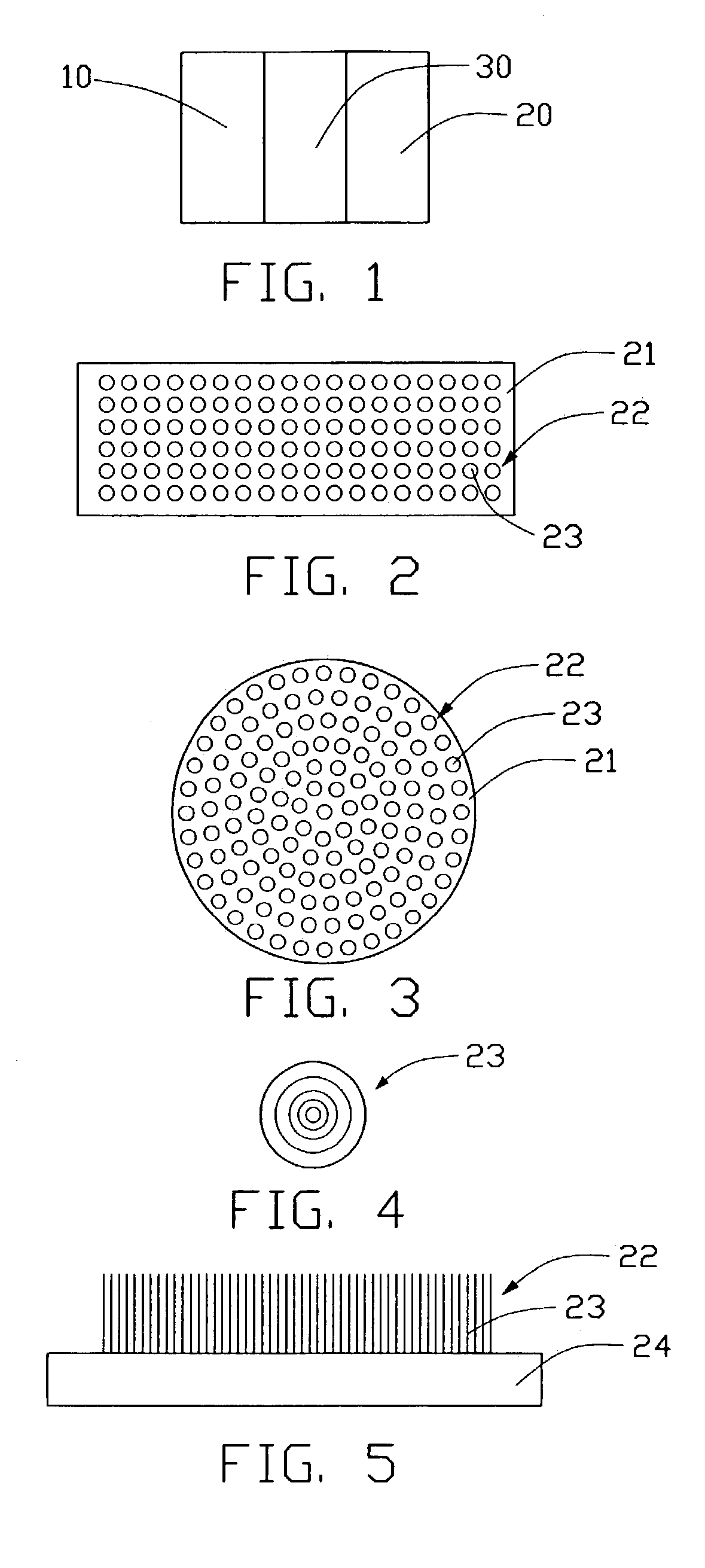Lithium ion battery comprising nanomaterials
a technology of nanomaterials and lithium ion batteries, which is applied in the direction of cell components, electrochemical generators, and nickel compounds, can solve the problems of difficult industrial production of single-walled carbon nanotubes using this method, low yield of this method, and complex purification processes, and achieves high charge capacity
- Summary
- Abstract
- Description
- Claims
- Application Information
AI Technical Summary
Benefits of technology
Problems solved by technology
Method used
Image
Examples
Embodiment Construction
[0017]Referring to FIG. 1, a lithium ion battery in accordance with a preferred embodiment of the present invention comprises a cathode 10, an anode 20, an electrolyte (not labeled), and a membrane 30 separating the cathode 10 from the anode 20.
[0018]The cathode 10 can be made of lithium doped transition metal oxides formed on a conductive substrate (not shown). In the preferred embodiment, the cathode comprises a plurality of nanoparticles of lithium doped transition metal alloy oxides represented by the formula LixCoyNizO2. An average diameter of the nanoparticles is in the range from 10 to 100 nanameters. The nanoparticles of LixCoyNizO2 can be prepared by sintering or another suitable method. A large surface area and high chemical activity of LixCoyNixOz nanoparticles is favorable for intercalation of lithium ions therein.
[0019]The electrolyte comprises a solvent and solute. The solvent is preferably propylene carbonate, ethylene carbonate, or dimethyl carbonate. The solute is p...
PUM
| Property | Measurement | Unit |
|---|---|---|
| diameter | aaaaa | aaaaa |
| electrical current | aaaaa | aaaaa |
| density | aaaaa | aaaaa |
Abstract
Description
Claims
Application Information
 Login to View More
Login to View More - R&D
- Intellectual Property
- Life Sciences
- Materials
- Tech Scout
- Unparalleled Data Quality
- Higher Quality Content
- 60% Fewer Hallucinations
Browse by: Latest US Patents, China's latest patents, Technical Efficacy Thesaurus, Application Domain, Technology Topic, Popular Technical Reports.
© 2025 PatSnap. All rights reserved.Legal|Privacy policy|Modern Slavery Act Transparency Statement|Sitemap|About US| Contact US: help@patsnap.com


